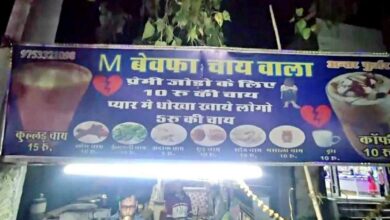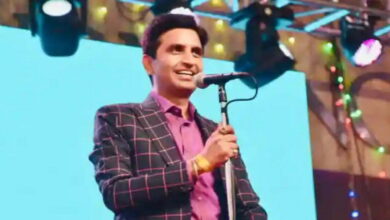When will the controversy over shrines end?

After the Supreme Court’s decision on the Ayodhya case, it seemed that everything would be fine now. Now there will be no dispute regarding any religious place. History will not repeat itself. After all, India has one religious place law approved by the Parliament and the decision of the country’s highest court, which was set aside in that law, was decided by the country’s highest court. The construction of a grand Ram temple at Ram Janmabhoomi also started. In the midst of all this, the chief of the Rashtriya Swayamsevak Sangh, Mohan Bhagwat, while advising the Hindus, said that ‘why see Shivling in every mosque’. This was also a statement to promote harmony and put an end to disputes. Only then was the possibility of history repeating itself. But the tragedy is that history is repeating itself. One after the other the disputes of the shrines are starting. Courts are interfering in them and new interpretations of the Dharmasthala Act, enacted in 1991, are taking place.
This is what happened in the dispute related to Gyanvapi Mosque of Varanasi. At the local level, some women filed a petition in the district court for regular worship of Maa Shringar Gauri, located in the Gyanvapi Masjid complex. The court not only accepted this, but also ordered a survey of the mosque premises. There was talk of getting a Shivling in that survey. The Hindu side called it a Shivling, while the Muslim side called it a fountain. The court directed to seal that structure and maintain status quo. When the Muslim side reached the Supreme Court regarding this matter, the Supreme Court rejected their objections. Interpreting the Dharmasthala Act, the Supreme Court said that the Act states that status quo will be maintained in respect of all shrines before 1947, but does not prevent it from deciding the nature of any shrine. The Varanasi court reiterated in its decision and also said that so far only permission for regular worship has been sought, no one has claimed it.
However, the Supreme Court’s interpretation is such that the entire purpose of the law may be defeated. If the nature of a shrine is decided by law, then how will any community be prevented from claiming it? Take Gyanvapi for example. Right now it is being speculated or on the basis of religious texts and circumstantial evidence, the Hindu side is saying that the entire complex of the mosque has been a part of the temple at some point and Muslim rulers or attackers broke the temple and built a mosque at that place. Is. There are many structures in the mosque complex, which give the impression of being a temple. For this reason, Maa Shringar Gauri was worshiped regularly in the mosque premises until 1993, and after that worship started once a year. This means that the presence of Hindu deities and idols in the mosque premises is accepted. Now if the same thing is proved in court legally and on the basis of historical or archaeological evidence then how will the Hindu side be prevented from claiming the same?
After it is proved that the Gyanvapi mosque complex has been a temple before, will it be possible to maintain the status quo on the basis of the shrine law? Keep in mind that a similar situation has arisen in Mathura with regard to the royal Idgah located near the birthplace of Lord Krishna. In that case also, the court has accepted the petition of the Hindu side and decided to hear it on determining the nature of the matter. Even there, if it is proved on the basis of historical evidence and archaeological evidence that the Shahi Idgah Mosque was part of the earlier temple, then how can Hindus be prevented from claiming it? Will it then be possible to implement the Dharmasthala Law? Wouldn’t this then open the Pandora’s box of disputes over shrines? Several organizations have earlier claimed that there is a list of 50,000 shrines that Hindus can claim. Think, what would be the situation if everywhere according to this new interpretation of the Dharmasthala Law, the work of determining the nature of the shrines started?
Now the question is, what is the way to do this? One way is that the Muslim community themselves go ahead and hand over the mosques of Kashi and Mathura to the Hindus. Even though there is a list of 50 thousand such shrines, which were earlier temples and later they were demolished and converted into mosques, but the case of Kashi and Mathura is different. According to Hindu belief, Kashi is the oldest city in the world located on the trident of Lord Shiva. Lord Shiva himself can reside there. Similarly Mathura is also the birthplace of Lord Krishna and it is also Leela Bhoomi. In the same way as Ayodhya is the birthplace of Lord Rama and hence is very closely associated with Hindu faith, Kashi and Mathura are also deeply connected with Hindu faith. Secondly, the encroachment of the mosque is very clearly visible in both these places. That is why Hindu organizations repeatedly say that there can be no compromise with Kashi and Mathura. This means that other places can be compromised. So, if a long legal dispute is to be avoided and any social disharmony is to be prevented from spreading, then one way is to go ahead and hand over both the mosques to the Hindus by the Muslim community.
What will happen after that? Will all disputes end after that? Who will guarantee it? After the enactment of the Dharmasthala Act, in 1991, it was thought that there would be no other temple-mosque dispute after Ayodhya. But even then it was being said that ‘Ayodhya is the tableau, Mathura-Kashi is the rest’. Now the controversy has shifted to Mathura and Kashi. Do you know whether the politics of votes and elections should start such controversies elsewhere in the coming days. After all, a controversy has started in Karnataka for holding Ganesh festival at Idgah ground in both Bengaluru and Hubli. Will a new law solve this? This is also less likely because the Muslim community was only on the basis of a law for the last three decades but in one stroke their trust was broken. It is also to be noted that the 1991 Dharmasthala Act has been challenged on 9 September this month. This law has been challenged by filing four separate petitions in the Supreme Court. The Chief Justice’s Bench has indicated to send it to the Constitution Bench. So, the law may change. After all, law is not a stone written inscription. The law is there, which is decided in the court. Therefore, it cannot be resolved with the help of law alone. This Hindu-Muslim gland is so old and so deep-seated in the public mind that at the slightest provocation it comes out in a very perverted form. So, along with the law, the first requirement is to prevent all kinds of provocations. After this the political use of religion has to be stopped and serious measures will have to be taken to strengthen communal harmony.






